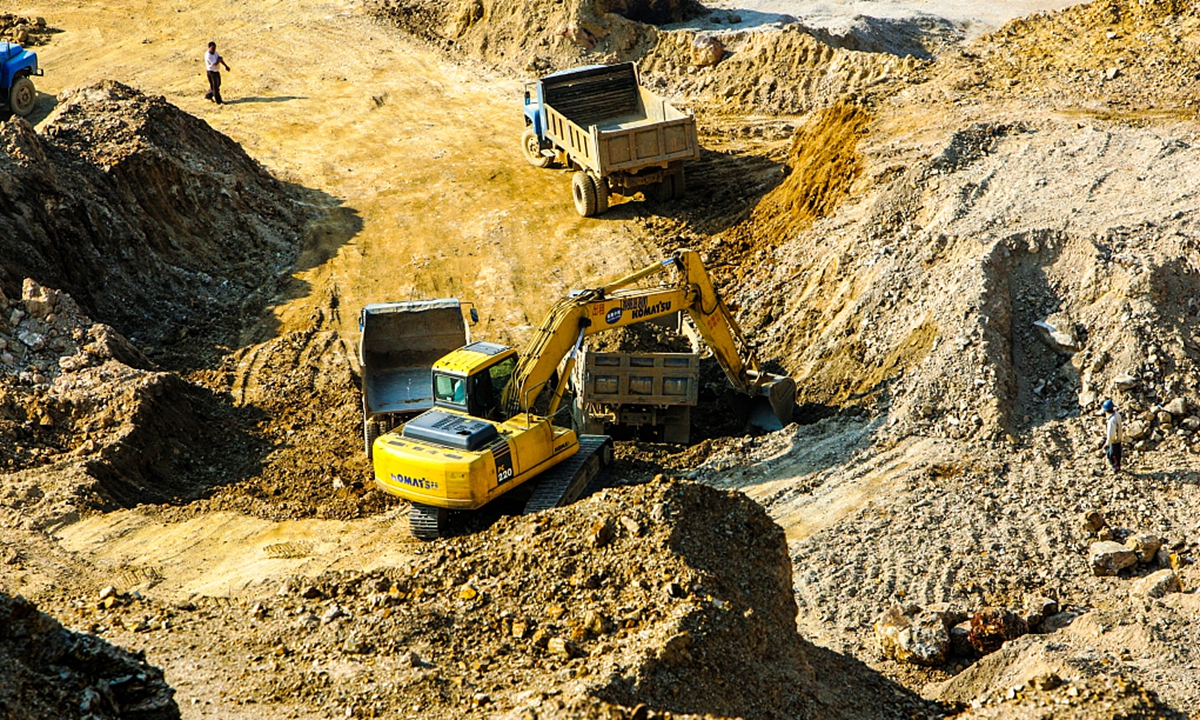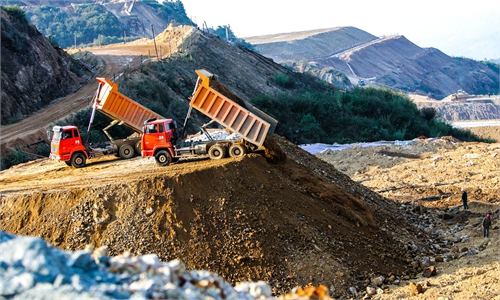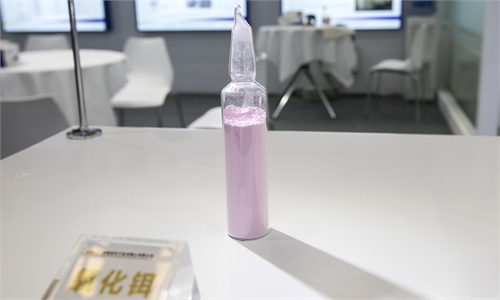China, Myanmar resume rare-earth trade after border reopening, to ease prices shortly
Elevated prices expected to ease, but longer-term gains likely: analysts

rare earth Photo:VCG
Myanmar resumed exporting rare earths to China after the reopening of China-Myanmar border gates in late November, sources told the Global Times, and analysts said that rare-earth prices are likely to ease in China as a result, although price rises are likely in the longer term because of China's focus on carbon emission cuts.
A manager of a state-owned rare earth company based in Ganzhou, East China's Jiangxi Province, who is surnamed Yang told the Global Times on Thursday that customs clearing for rare-earth minerals from Myanmar, which had been held up at border ports for months, resumed at the end of November.
"There are trucks carrying rare-earth minerals coming into Ganzhou every day," Yang said, while estimating that about 3,000-4,000 tons of rare-earth minerals had piled up at the border port.
According to thehindu.com, two China-Myanmar border crossings reopened for trade in late November after being closed for more than six months due to coronavirus restrictions.
One crossing is the Kyin San Kyawt border gate, around 11 kilometers from the northern Myanmar city of Muse, and the other is the Chinshwehaw border gate.
The timely resumption of the rare-earth trade could reflect the eagerness of the relevant industries in the two countries to resume doing business, as China is reliant on Myanmar for rare-earth supplies, experts said.
About half of China's heavy rare earths, such as dysprosium and terbium, come from Myanmar, Wu Chenhui, an independent rare-earth industry analyst, told the Global Times on Thursday.
"Myanmar has rare-earth mines that are similar to those in China's Ganzhou. It's also a time when China is striving to adjust its rare-earth industries from large-scale dumping to refined processing, as China has grasped many technologies after years of extensive development," Wu said.
Experts said that the resumption of the rare-earth trade should lead to lower prices in China, at least for some months, after prices have grown since the beginning of this year. Wu said that the decline is hard to predict, but it might be within 10-20 percent.
Data on China's bulk commodity information portal 100ppi.com showed that the price of praseodymium-neodymium alloy surged by about 20 percent in November, while the price of neodymium oxide was up by 16 percent.
However, analysts said that prices might head higher again after several months, since the fundamental upward trend has not ended.
An industry insider based in Ganzhou, who spoke on condition of anonymity, told the Global Times on Thursday that the rapid gain in upstream supply may lead to short-term price falls, but the long-term trend is up, due to labor shortages in the industry.
"Exports are estimated to be basically the same as before. But Chinese exporters may not be able to catch up with demand if foreign buyers purchase rare earths in large volumes," the insider said.
Wu said one important reason for the higher prices is that China's demand for rare-earth ores and products is surging with the government's focus on green development. Rare earths are widely used in products like batteries and electric motors to enhance the products' performance.
"Also, the whole industry is aware of rare earths' value restoration, after the government raised the requirements to protect rare-earth resources and stop low-price dumping," he said.
Wu noted that as Myanmar resumes its exports to China, China's rare-earth processing and exports will increase accordingly, but the market impact will be limited, as there haven't been any significant changes in the world's rare-earth supply structure.




